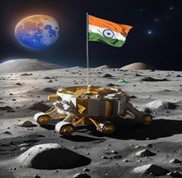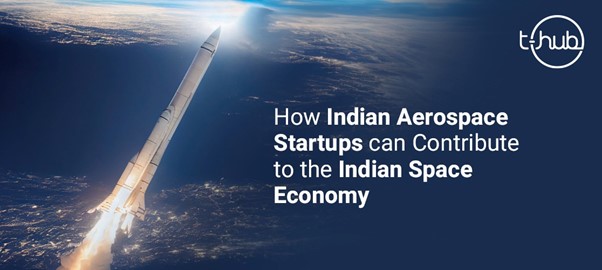Space technology goes beyond space shuttles and exploring space. It also encompasses tools and systems designed for communication and scientific study beyond Earth’s atmosphere. Space technology can be leveraged in defence, agriculture, entertainment, transportation, communication and maritime sectors.
India, too, has been making advances in materials, propulsion and artificial intelligence to drive innovations and reach new frontiers in space exploration. The Indian Space Research Organisation (ISRO) has completed missions, such as Mangalyaan, Chandrayaan 1, 2 and 3, innovated a navigation satellite system and built polar satellite launch vehicle (PSLV) and reusable launch vehicle (RLV). Also, through global collaborations and ISRO’s commercial arm, New Space India Ltd., (NSIL), India’s space economy has achieved a valuation of USD 8 billion and is expected to touch USD 40 billion by 2024. It accounts for two per cent of the global space economy.
The Indian government has introduced the Indian Space Policy (ISP) 2023, which allows private sector participation in the space sector, with the aim of capturing 10 per cent of the global space market share by 2030. The policy initiative is aimed at fostering opportunities for private enterprises and startups. In 2022, investors poured USD 119 million into Indian space startups, up from a total of just USD 38 million in all the years up to 2017. The investments are meagre when the global space industry is pegged at over USD 360 billion. Indian startups working in this field have an opportunity to identify market gaps and contribute to India’s space ambitions.

Introducing the Indian Space Policy 2023 With private-sector partnerships, the policy initiative aims to foster advancements in technology developments in satellite-based services and products, PSLV and SSLV production and other satellite-building systems and subsystems. It allows private enterprises to build along with ISRO and go beyond.
The ISP lets private enterprises and startups carry India’s end-to-end activities to cater to domestic and global demands. Under the policy, the 400 private aerospace startups, SMEs and conglomerates will now be permitted to engage in the establishment and operation of space objects, ground-based assets and related services, such as communication, remote sensing and navigation. The private companies will have the flexibility to own, procure and lease satellites, offer communication services worldwide and disseminate remote sensing data. They can also design and operate launch vehicles, establish their space infrastructure, make filings with the International Telecommunication Union (ITU) and even engage in the commercial recovery of asteroid resources.

While the established players have been instrumental in India lunar exploration endeavors, T-Hub incubated startup Skyroot Aerospace and other emerging Indian aerospace startups are pushing the boundaries by working on advanced space launch vehicle designs. Indian corporates have much to gain working closely with startups working on the cutting edge of space travel.







